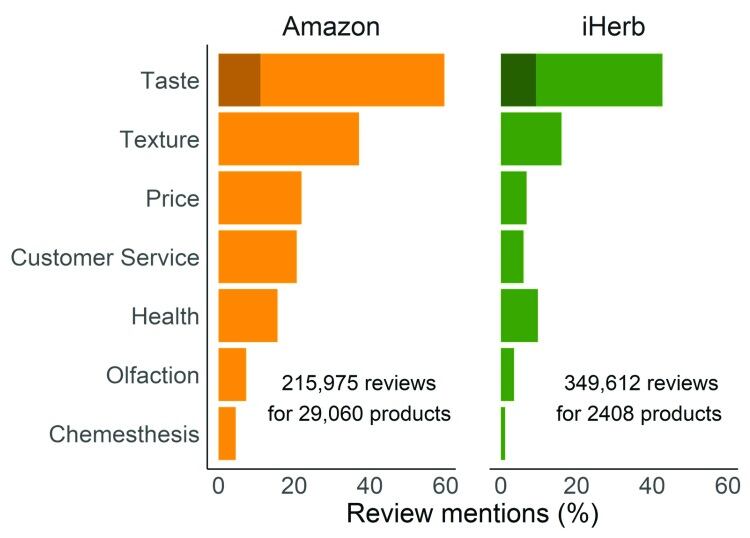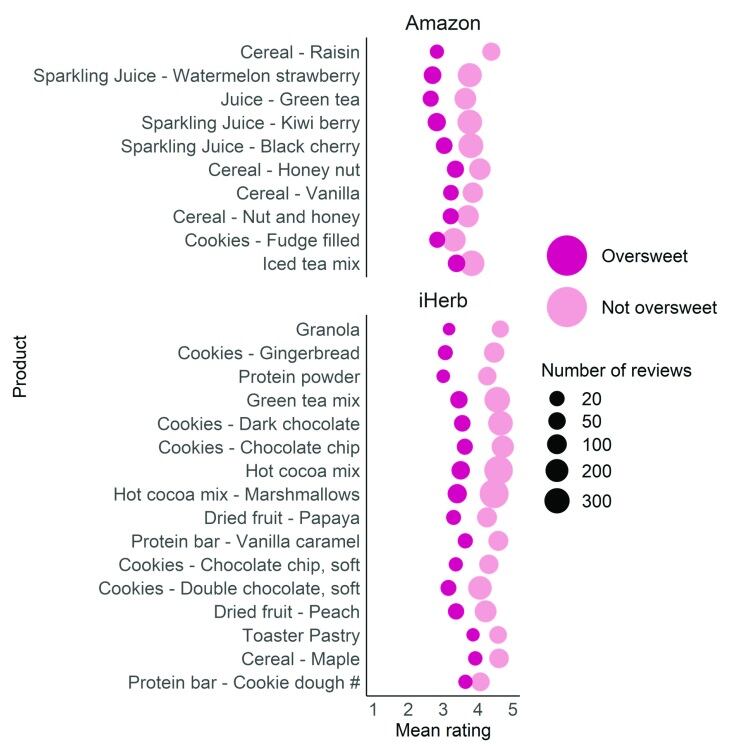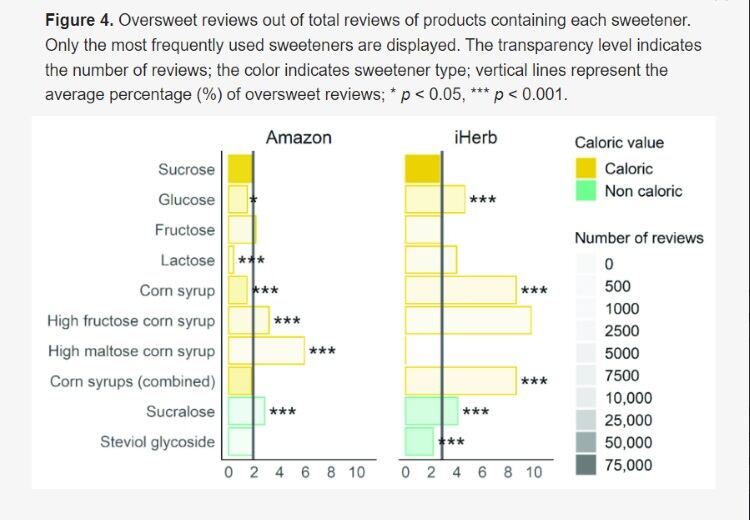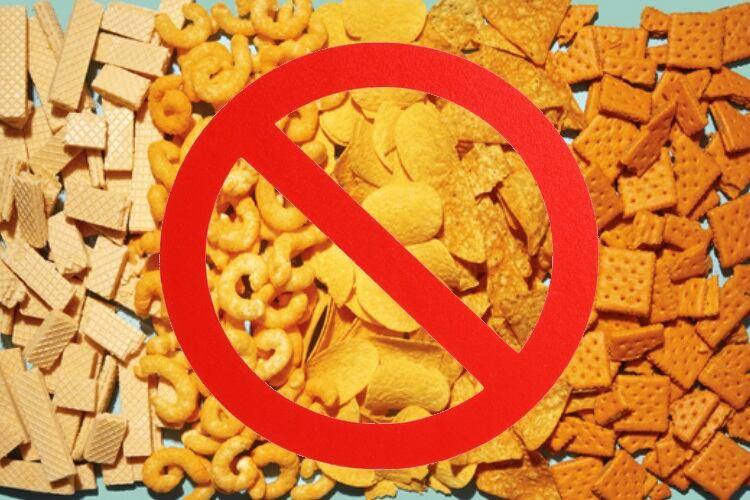Humans are born with a sweet tooth – principally to help with the acceptance of breastmilk.
“Sweet taste is innately appealing, ensuring that mammals are attracted to the sweetness of mother’s milk and other sources of carbohydrates and calories,” like fruits during periods of growth, wrote Kim Asseo, a student at the Hebrew University (HU) of Jerusalem, under the supervision of Prof Masha Niv, a taste expert at HU’s Robert H. Smith Faculty of Agriculture, Food and Environment.

“In the modern world, the availability of sugars and sweeteners and the eagerness of the food industry to maximise palatability result in an abundance of sweet food products, which poses a major health challenge.”
She added that “although sweetness preference does not correlate with obesity and type 2 diabetes, overconsumption of sugars does,” and today, obesity is a global pandemic affecting over 650 million adults and 378 million children under the age of 18 (World Health Organization, 2020).
However, the desire for something sweet – and especially its intensity – varies according to social norms (age, gender, race and culture); the behaviour of others at the table (individual differences); and satiety (the food or beverage itself).
Taste versus health
There has been a big push to sweeten the health angle.
The WHO recommends the intake of free sugars (defined as monosaccharides and disaccharides added to foods, plus sugars that are naturally present in honey, syrups and fruit juices) be reduced to less than 10% of total energy intake, while the 2020-2025 Dietary Guidelines for Americans (DGA) committee is pushing to lower this to 6%.
Around 72% of Americans claimed to be trying to limit or avoid sugars in 2021 (admittedly a dip from 80% in 2019), as per data from the International Food Information Council (IFIC). There has been a greater uptake in using low- and non-caloric sweeteners, although there is accumulating evidence of deleterious effects of certain offerings.
A 2021 study in Frontier in Nutrition using NHANES 2001-2018 found there had been a decrease in the consumption of sweet beverages and tabletop sweeteners in that period in the US, but not food.
In fact, the Asseo study – published in Foods – found a surprisingly high number of ‘too sweet’ comments from reviewers of products sold on Amazon and iHerb.

The aim of the study was to analyse sweetness levels, liking and ingredients of online reviews of food products in order to obtain insights into sensory nutrition and to identify new opportunities for reconciling the palatability-healthiness tension.
Sensory tests are key for launching and monitoring the success of a product by new product developers, and typically rely on 100-1,000 participants to represent the consumers.
The team studied over 560,000 reviews of 31,000 products – including breakfast cereals, cookies, dried fruit, protein bars, toaster pastries and beverages – and using manual curation, natural language processing (NLP) and machine learning to categorise the responses, found up to 16% of the reviews referred to the products’ sweetness.
NLP applies a combination of linguistics, computer science and artificial intelligence (AI) approaches to human language. The goal is to provide computerised ‘understanding’ of the contents of documents, including the contextual nuances of the language within them.
“To the best of our knowledge, this is the first big-data analysis that links food reviews to their ingredients,” said Asseo.
“Importantly, the analysis provides insights on the preferred type of sweetener people use, assuming that customers buy products they want to eat.”
The team collected over 200,000 reviews of ~30,000 products on Amazon sold between 2002 to 2012, and ~350,000 reviews of ~2,400 products on iHerb sold between 2006 to 2021.
In total, ~32,000 (Amazon) and ~29,000 (iHerb) of the reviews mentioned sweetness, with 2,200 and 4,600 reviews referring to the purchased products as oversweet.
“Oversweetness is the most commented concern regarding taste,” said Asseo.
“The tension between taste and health is a constant challenge for the modern food industry and the consumers. Here, we show that some ‘extra-sweet’ products are an overshoot for some consumers, resulting in a misfit, both in terms of hedonics and in nutritional parameters.
“This is important because customers who complained about products being oversweet gave them significantly lower scores (one star less) than did customers who did not complain about oversweetness.”
The reviewers response
The study found the oversweet reviews were dispersed among consumers.
“In addition, the reviews mentioning oversweetness came from different customers and only for some of the products those customers tried, rather than from ‘serial complainers’,” said Prof Niv.
“The vast majority of customers never complained about oversweetness, and only 3/128 Amazon customers and 4/492 iHerb customers submitted over 10% oversweet reviews. This indicates that oversweetness perception is not due to a few consumers complaining about multiple products but is rather derived from a non-negligible number of customers reacting in a product-dependent manner,” added Asseo.
The added perception

Products that included the artificial sweetener sucralose – 37% in Amazon and 28% in iHerb products – had more oversweet reviews than average and garnered a significantly lower score (0.9 stars on average on a 1 to 5 stars scale).
“Food companies that make snacks, candies, snacks and soft drinks must also pay attention to the demand for products that are less sweet,” said Asseo.
“This is important not just for public health reasons – supplying members of the public who prefer food that is less sweet and is healthier – but also for the food companies themselves, so that they can boast a healthier product line.”
This also “suggests an opportunity for customised products with reduced sweetness. These products will be simultaneously healthier and tastier for a substantial subgroup of customers and will benefit the manufacturer by expanding the products’ target audience.”
Prof Niv concluded that “despite popular opinion, it is not the case for everyone that sweeter means tastier. There is an opportunity here to diversify the levels of sweetness in products and to create healthier versions that are more closely tailored to the preferences of certain customer groups.”
Studies:
Harnessing Food Product Reviews for Personalizing Sweetness Levels
Authors: Kim Asseo and Masha Y Niv
Foods 2022, 11(13), 1872
doi.org/10.3390/foods11131872
Funding came from the Israel Innovation Authority and Israel Science Foundation
Authors: Alison Kamil, Alissa R. Wilson and Colin D. Rehm
Front Nutr. 2021; 8: 777857.
doi: 10.3389/fnut.2021.777857
Artificial sweeteners and cancer risk: Results from the NutriNet-Santé population-based cohort study
Authors: Charlotte Debras, Eloi Chazelas, et al
PLoS Med 19(3): e1003950
doi.org/10.1371/journal.pmed.1003950



